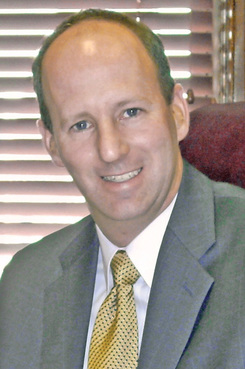Was quoted in this article in the nationally published Business Insurance magazine regarding the write-up on Judge Terrence R. Nealon's decision in the case of Palmiter v. Commonwealth Health Systems regarding the validity of a Plaintiff's employment discrimination lawsuit after she was fired for testing positive for marijuana use even though she advised the employer that she was an authorized user of medical marijuana:
Medical Marijuana Trend Means Growing Discrimination Exposures
by
Judy Greenwald
December 10, 2019
A growing number of workers and job applicants are successfully suing businesses for discrimination after they terminate or fail to hire them because of their medical marijuana use, experts say.
The trend is expected to accelerate with 33 states and the District of Columbia to date having legalized medical marijuana’s use, these experts say.
Recent cases include a Nov. 22
ruling by the Court of Common Pleas of Lackawanna County in Scranton, Pennsylvania, which became the first state or federal court in Pennsylvania to rule on the issue.
Complicating the situation for employers, meanwhile, is the fact that marijuana remains an illegal drug under federal law and various state laws create a patchwork quilt of legislation for them to follow.
Experts recommend that employers make an effort to engage in an interactive process with workers in states where medical marijuana has been legalized.
In the Pennsylvania case, the Court of Common Pleas held in
Pamela Palmiter v. Commonwealth Health Systems Inc. at al. that although the state’s Medical Marijuana Act, which became effective in 2016, does not explicitly permit a private right of action by an employee who is allegedly discriminated against because of medical marijuana use, it does so implicitly.
“It opens the door to other lawsuits” and will be influential both inside the state and elsewhere, said
Daniel E. Cummins,
a partner with [Cummins Law] in Scranton that represents clients in civil litigation.
Observers point to comparable rulings in federal and state courts including in Arizona, Connecticut, Delaware, Massachusetts, New Jersey and Rhode Island.
Frederick T. Smith, a labor and employment attorney with Seyfarth Shaw LLP in Charlotte, North Carolina, said that of the 33 states that have legalized medical marijuana use, 16 provide workspace protections, either through their statutes or through case law interpreting their statutes, with the remaining either silent or ambiguous on the issue.
The 16 states are Arkansas, Arizona, Connecticut, Delaware, Illinois, Maine, Minnesota, Nevada, New Jersey, New Mexico, New York, Oklahoma, Pennsylvania, Rhode Island, West Virginia and Massachusetts.
Mr. Smith said that while courts initially tended to rule employees could not pursue discrimination charges in medical marijuana cases, “the tide started to turn in 2017, with decisions coming from courts in the Northeast that changed the risk analysis for the business community when it comes to applicants’ and employees’ use of marijuana.”
“There’s an increasing trend across all states to protect the medical use of marijuana and to treat it similarly to how prescription drugs are treated,” said Matthew A. Hesketh, a member of Sherman & Howard LLC in Phoenix, whose practice focuses on contractual disputes, corporate and business matters, administrative law and appellate litigation.
“If an employee would be entitled to use prescription drugs in compliance with the law, the trend is courts are willing to treat marijuana in the same way, assuming it has some recognized protection under state law,” he said.
“There are two primary avenues for recognizing protection of medical marijuana,” Mr. Hesketh said. “The first is through an antidiscrimination type of law, so generally, if medical marijuana can be viewed as a reasonable accommodation for someone’s disability, some states are willing to recognize that under their own state laws (that are) analogous to the (Americans With Disabilities Act), that the medical use of marijuana is potentially a reasonable accommodation,” although they cannot use it on the job site, he said.
The other source of protection is instances such as Arizona’s, where the law protects employers from taking any adverse action against an employee who is a registered medical marijuana cardholder as long as he does not come to work impaired.
“There’s going to be a movement” of litigation in this area, said Vance O. Knapp, a partner with Armstrong Teasdale LLP in Denver in management-side labor and employment law .
“The first step was to get it legalized,” he said. Now that its proponents have been successful, the next movement will be to provide protection for employees.
If workers have a medical marijuana card “the really smartest move to make” is to engage with them in an interactive process “and see if they have an underlying disability which requires accommodation,” said Amy Epstein Gluck, a partner with FisherBroyles LLP in Washington who advises business owners on compliance with anti-discrimination laws.
Mr. Smith said employers “should be reexamining their policies and practices and their tolerance for risk” in the 16 states that provide discrimination protection.
“Many companies are developing reasonable accommodation processes in order to determine whether applicants’ and employees’ use of medical marijuana doesn’t impact their ability to safely and effectively perform their jobs in the case of employees, and the jobs to which they are applying in the case of applicants,” he said.
Linda B. Hollinshead, a partner with Duane Morris LLP in Philadelphia, who provides training and counseling to employers, said she recommends employers look at the situation from the perspective of two points in time: at the prehiring, post-drug testing stage, and situations where the employee is already working at the company, where the issue most often arises post-accident and there is a reasonable suspicion of drug use.
In cases where the applicant has not yet been hired, employers should “carefully consider what kinds of positions they really want to be testing for,” and distinguish between safety-sensitive and nonsafety-sensitive positions, she said.
“I have many clients who have decided to not test for marijuana,” at least at the pre-hire stage, for nonsafety-sensitive positions, she added.
Employers who do conduct drug testing should work with their medical review officers and drug testing companies, and set up protocols that provide an expert’s independent judgment on the issue if the candidate tests positive, she said.
The employer should then engage in an interactive process with the applicant to determine if they can safely perform in the position for which they are being considered.
In cases where someone is already working at the company, employers “have to distinguish between safety-sensitive and nonsafety-sensitive” positions, but in states where medical marijuana has been legalized, the employer should not make a decision a worker should not be employed simply because they use medical marijuana, she said.
Experts recommend employers stay on top of local laws in this matter.
“Obviously this is an area of law that’s evolving rapidly,” said Mr. Hesketh. It is a lot to keep track of, he added, with new court cases, legislation and proposed legislation “almost every single day,” he said.
“The best advice I can give is to keep it on your radar” and be cognizant that “this is changing quickly. This isn’t something where you can just rely on old policies or handbooks or what may have been OK” even a year ago.
“It comes down to corporate culture and management decisions from one company to the next,” said Marshall Gilinsky, a shareholder with Anderson Kill P.C. in New York with practices in the firm’s insurance recovery and commercial litigation departments.
“You can see how there are reasons why, say, a trucking company might have a different policy compared to an advertising agency. But either way, it seems that when it comes to medical marijuana, the idea that someone can be fired because of the medicine that they’re taking doesn’t seem to be fair or make sense,” Mr. Gilinsky said.
“Obviously, if you have an employee who’s operating heavy equipment, it’s clear they can’t be intoxicated while on the job, but most medical marijuana products do not have intoxicating or hallucinatory effects.”
Federal action is also possible, said Paula A. Barran, founding partner at Barran Liebman LLP in Portland, Oregon, who represents management. “At some point, I think the patchwork quilt is going to force Congress to change where it’s headed,” she said.
Another factor to consider, she said, are remaining questions as to marijuana’s safety. “The products haven’t been studied for safety or purity or long-term effect,” she said.





 Daniel E. Cummins.
Daniel E. Cummins. Photo credit: Rawpixel.com/Shutterstock.com
Photo credit: Rawpixel.com/Shutterstock.com










